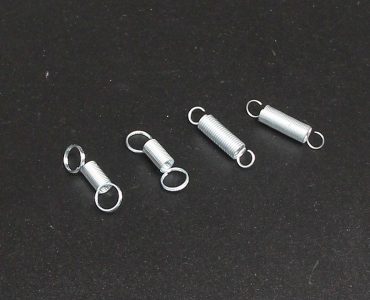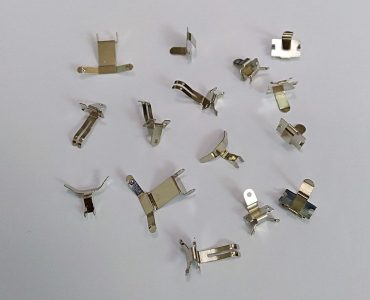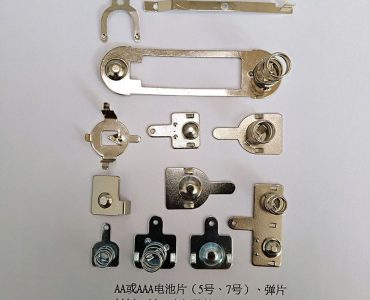The use of spring as a protective layer
What is the spring maintenance layer? What is the effect of the spring maintenance layer? I believe you are not very clear about these two issues. In fact, the effect of making mechanical substances on the surface of the spring, such as paint, asphalt, plastic and other paint maintenance layers, is to protect the spring from corrosion. The electroplating maintenance layer can not only be maintained and protected from corrosion. At the same time, it can improve the appearance of the hardware spring. Electroplating certain metals can also improve the working performance of the spring, such as improving the surface hardness, increasing the wear resistance, improving the thermal stability, and avoiding ray corrosion.
1. How to make the maintenance layer of the spring?
1. When the electrostatic spraying method passes the thermosetting powder through the nozzle of the spray cavity, negative charge is induced, and under the effect of the warehouse and compressed air, the plastic powder is evenly spread on the surface of the spring. Then the sprayed spring is heated and insulated (plasticized) in an oven at a temperature of 150~180°C to form a bright and strong surface maintenance layer. The general insulation time is 40~60min. This process has the advantages of high efficiency, suitable for flow production, good product quality, uniform paint film thickness, and good adhesion. At present, this method is increasingly widely used in the spring manufacturing industry.
2. Dip coating method The dip coating method is to dip the spring into the paint tank, then take it out, let the remaining paint on the surface drip naturally, and after drying, it will be covered with a layer of paint film on the spring surface. The dip coating method has high production efficiency and can be applied to mechanized and automated production. And the skills are simple and easy to operate. However, the paint evaporates quickly, and paints containing heavy pigments and two-component paints (amine-cured epoxy paint, polyurethane paint, etc.) are not suitable for use. The paint film of the dipping method is not flat, and it is easy to have the phenomenon of thin top and thick bottom and sagging at the edges.
3. Others follow the change of the main engine structure and the increasingly stringent working conditions of the spring when it is working. In order to improve the service life of the spring, the surface anti-corrosion treatment of the valve spring, etc. is changed to apply special anti-rust oil after the spring is cleaned ( Grease) to replace the traditional oxidation or plating treatment.
4. Spraying method Spraying is to use a spray gun to spray the paint into mist-like tiny particles to evenly accumulate a layer of paint film on the surface of the spring. The spraying method has high work efficiency, convenient construction, strong adaptability, and the paint film thickness is relatively uniform, smooth and lubricated. However, the effective use rate of paint for spraying method is only about 70%~80%, and it requires more solvents than other methods. These solvents will all evaporate, and the loss is too large. In addition, due to the dispersion of paint mist particles and the evaporation of the solvent, it constitutes environmental pollution and affects the health of workers.
Second, the effect of the spring maintenance layer
1. Dip coating method The dipping method is to put the spring into the paint tank to soak, and then take it out, let the remaining paint on the surface drip naturally, after drying, it will be covered with a layer of paint film on the spring surface, produced by the dipping method High efficiency, suitable for mechanized and automated production. And the skills are simple and easy to operate. However, the paint evaporates quickly, and paints containing heavy pigments and two-component paints (amine-cured epoxy paint, polyurethane paint, etc.) are not suitable for use. The paint film of the dipping method is not flat, and it is easy to have the phenomenon of thin top and thick bottom and sagging at the edges.
2. Spraying spraying method sprays the paint into a mist of tiny particles with a spray gun to evenly accumulate a layer of paint film on the surface of the spring. The spraying method has high work efficiency, convenient construction, strong adaptability, and the paint film thickness is relatively uniform, smooth and lubricated. However, the effective use rate of paint for spraying method is only about 70%~80%, and it requires more solvents than other methods. These solvents will all evaporate, and the loss is too large. In addition, due to the dispersion of paint mist particles and the evaporation of the solvent, it constitutes environmental pollution and affects the health of workers.
3. When the electrostatic spraying method passes the thermosetting powder through the nozzle of the spray cavity, negative charge is induced, and under the effect of the warehouse and compressed air, the plastic powder is evenly spread on the surface of the spring. Then the sprayed spring is heated and insulated (plasticized) in an oven at a temperature of 150~180°C to form a bright and strong surface maintenance layer. The general insulation time is 40~60min. This process has high efficiency. It is suitable for assembly line production, with good product quality, uniform paint film thickness, and good adhesion. At present, this method is increasingly used in the spring manufacturing industry.
4. Others follow the change of the main engine structure and the increasingly stringent working conditions of the spring when it is working. In order to improve the service life of the spring, the surface anti-corrosion treatment such as the valve spring is changed to apply special anti-rust oil after the spring is cleaned ( Grease) to replace the traditional oxidation or plating treatment.




